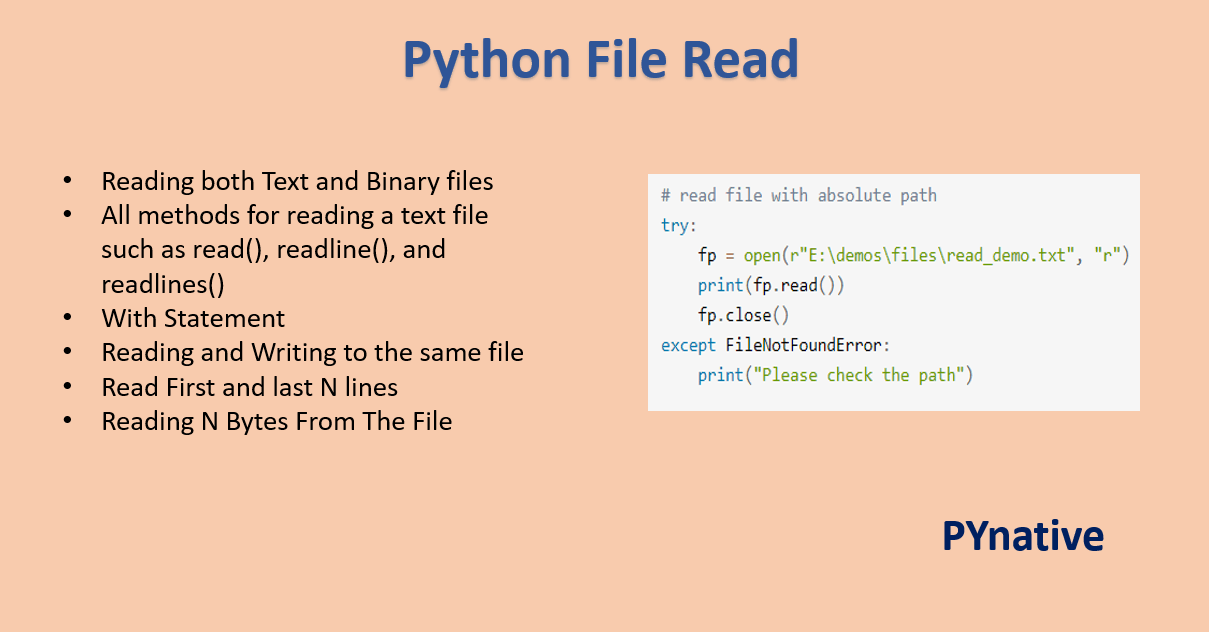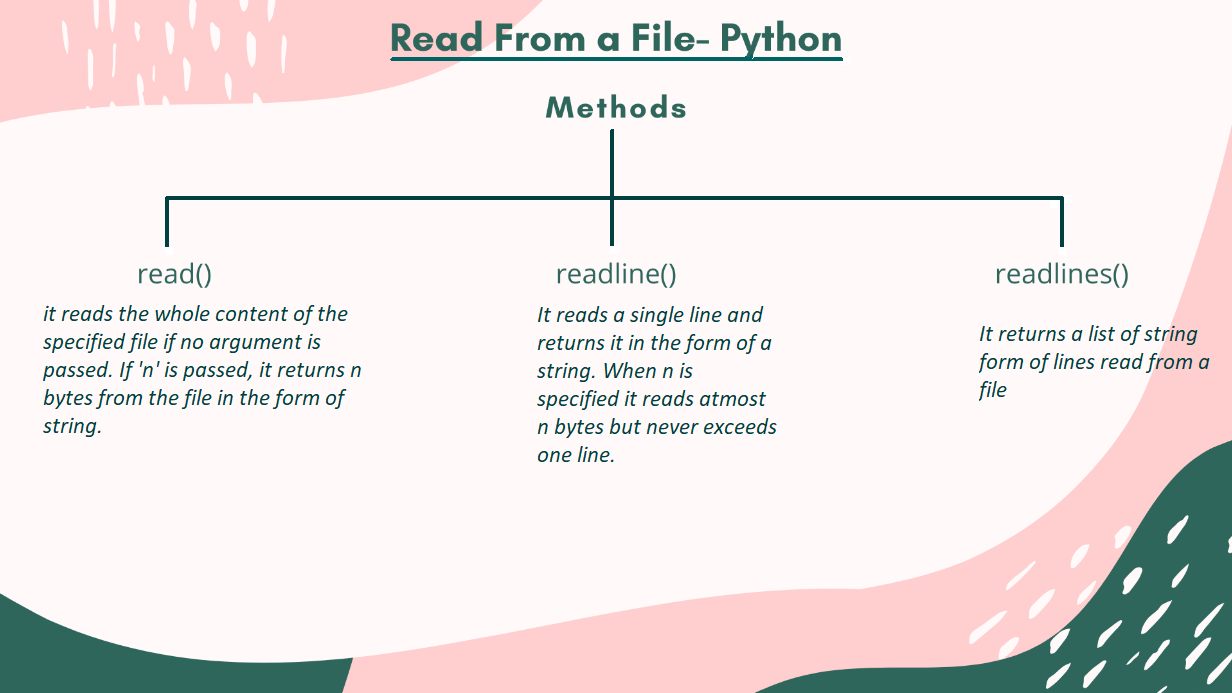Python Read A File Into A String
Python Read A File Into A String - Once all the writing is done, close the file. Csvfile can be any object with a write() method. Call write () function on the file object, and pass the string to write () function as argument. Save the file with name example.py and run it. Open the text file in write mode using open () function. Firstly the path to the file. The function returns a file object. In this tutorial you will learn: Reading and writing files 7.2.1. Store the resulting string in a variable;
Call write () function on the file object, and pass the string to write () function as argument. What makes up a file and why that’s important in python Methods of file objects 7.2.2. Web following is the step by step process to write a string to a text file. The lines may include a new. For this, we will read everything using the file. The function returns a file object. If you want only a string, not a list of the lines, use text_file.read() instead. Web python read file into string using replace () function. Now, is it possible to read the string in such a way that when it is read into the string, it is i don't like this, instead of i don\xe2\x80\x98t.
Web read and write (‘r+’): The lines may include a new. Open the file for reading and writing. Read () method returns whole content of the file as a string. Web the file object provides you with three methods for reading text from a text file: If csvfile is a file. Web 1 answer sorted by: Use the replace() method to replace any newline characters; The handle is positioned at the beginning of the file. Use the read() method to read the file;
√99以上 line break in python output 227297Line break in python output
Web use the join() function to read a text file to a string in python. Close the file by calling close () method on. If you want only a string, not a list of the lines, use text_file.read() instead. Use the read() method to read the file; Csvfile can be any object with a write() method.
Python File Handling Create, Open, Append, Read, Write Python
Web one of the most common tasks that you can do with python is reading and writing files. Web f1 = open (file1, r) text = f1.read () command to do the reading. Web 1 answer sorted by: The join() method allows us to join different iterables in python. Open () function returns a file object.
Reading Files in Python PYnative
The join() method allows us to join different iterables in python. You also have another problem in your code, you. The handle is positioned at the beginning of the file. Open () function returns a file object. How to load files into the main memory and create a file.
Python File
Web 1 if you really need a stringio (likely the file object will do), just do stream.write (open (filename).read ()). Read () method returns whole content of the file as a string. Raises i/o error if the file does not exist. Web the read method readlines () reads all the contents of a file into a string. You also have.
Python Read Text File Line By Line Into String Texte Préféré
Open the file for writing. Load the content of a single text file. Firstly the path to the file. In this short python tutorial we’ll learn how to load the contents one or multiple files (being both text, csv files) into a string variable object with python 3. The handle is positioned at the beginning of the file.
Python reading file, writing and appending to file YouTube
If csvfile is a file. The task could be performed using the replace function, a default function in all python distributions. Web the file object provides you with three methods for reading text from a text file: Web use the join() function to read a text file to a string in python. Once all the writing is done, close the.
Python File Input Read Version 1 YouTube
Web 1 answer sorted by: Well, we have read the file. Firstly the path to the file. We will cover several scenarios: Call read () method on the file object.
Python Read File Python File Open (Text File example) EyeHunts
Web steps to read a text file into a string and strip newlines in python. Reading and writing files 7.2.1. F = open (details.txt,r) print (f.read ()) we are searching for the file in our storage and opening it.then we are reading it with the help of read () function. What makes up a file and why that’s important in.
Python Read Text File Line By Line Into Dataframe Texte Préféré
Firstly the path to the file. The string format() method 7.1.3. Web 1 answer sorted by: Raises i/o error if the file does not exist. Store the resulting string in a variable;
Top 13 python readfile in 2022 Gấu Đây
Reading and writing files 7.2.1. Then, decode it to get string. Whether it’s writing to a simple text file, reading a complicated server log, or even analyzing raw byte data, all of these situations require reading or writing a file. Methods of file objects 7.2.2. For this, we will read everything using the file.
The String Format() Method 7.1.3.
If csvfile is a file. Open () function returns a file object. Close the file by calling close () method on. F = open (details.txt,r) print (f.read ()) we are searching for the file in our storage and opening it.then we are reading it with the help of read () function.
Web Use The Join() Function To Read A Text File To A String In Python.
Web read and write (‘r+’): For this, we will read everything using the file. Use the replace() method to replace any newline characters; Web the file object provides you with three methods for reading text from a text file:
The Handle Is Positioned At The Beginning Of The File.
Whether it’s writing to a simple text file, reading a complicated server log, or even analyzing raw byte data, all of these situations require reading or writing a file. Web f1 = open (file1, r) text = f1.read () command to do the reading. Raises i/o error if the file does not exist. Call write () function on the file object, and pass the string to write () function as argument.
We Will Cover Several Scenarios:
Web steps to read a text file into a string and strip newlines in python. Web 1 answer sorted by: Store the resulting string in a variable; What makes up a file and why that’s important in python









